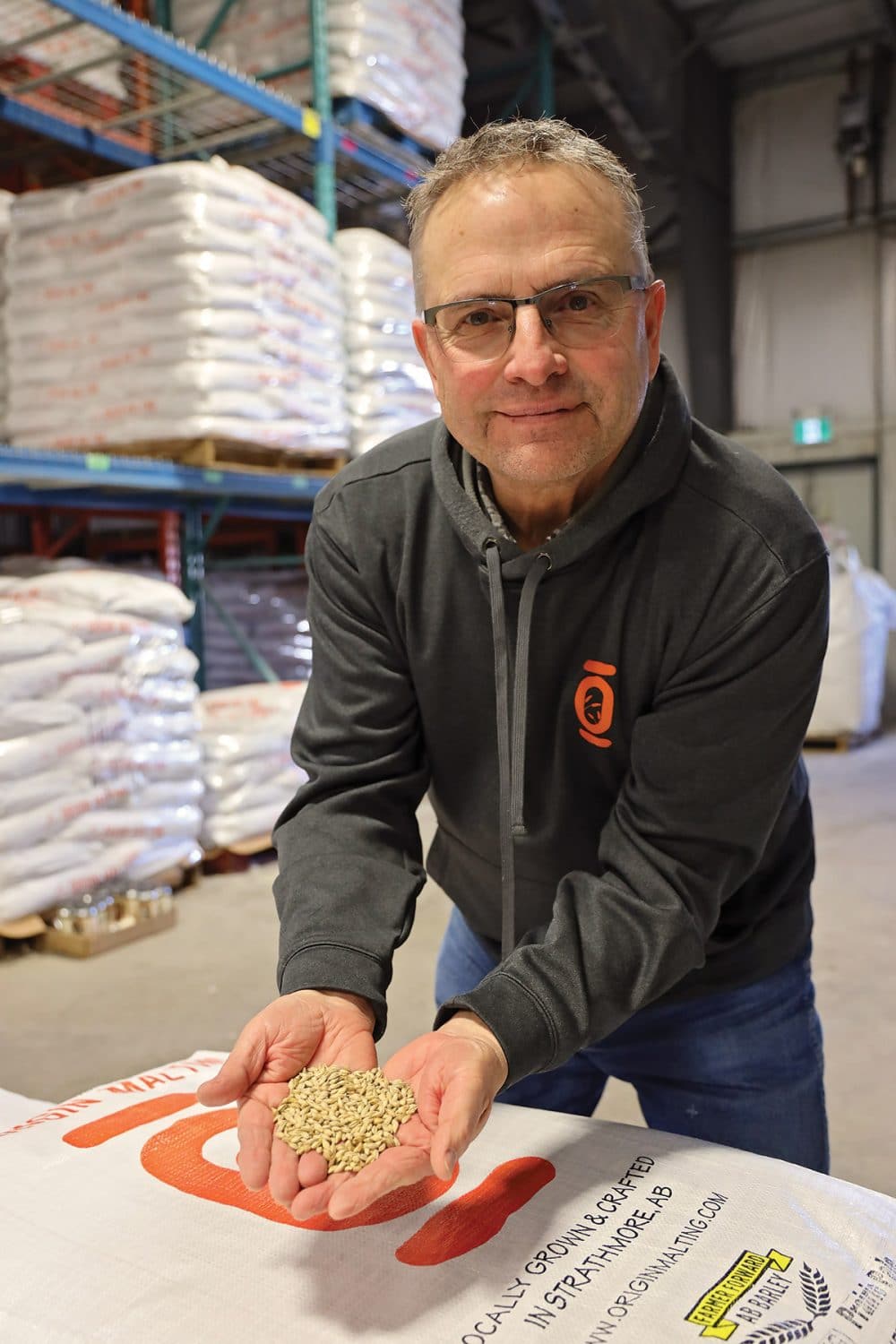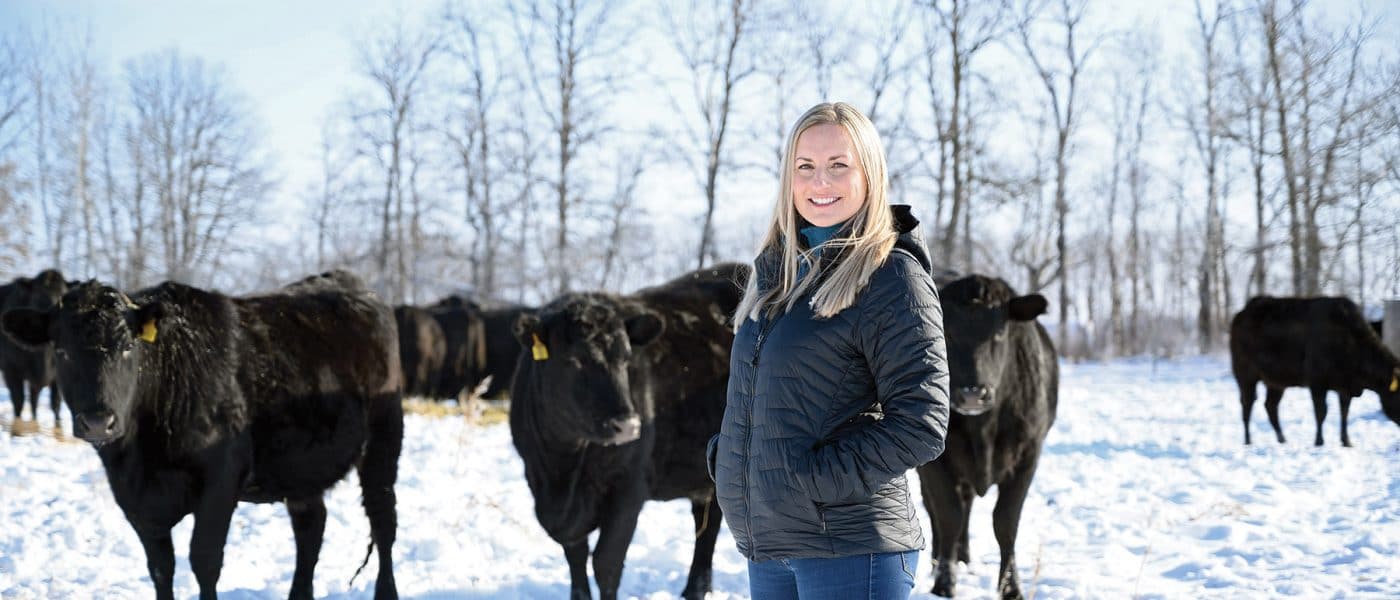Story
June 18, 2020
Agriculture and conservation: food for thought
From beef to beer to bread and beyond, these stories of people and partnerships show how sustainable “farm to table” products can be, when they come with a healthy side of conservation.
Story originally published in DUC’s Conservator magazine
At the Fairmont Chateau Whistler, a couple sits down for dinner: filet mignon, grass-finished and perfectly aged, paired with a dry red wine. Meanwhile, some 300 kilometres north, Randy Jones, along with partners Juri and Irinel Agapow, close the book on another long, labour-intensive day at the Hanceville Cattle Co.
Located in the Chilcotin District of the Central Interior of B.C., roughly 90 kilometres west of Williams Lake, the Hanceville Cattle Co. (HCC) is a prime example of a company committed to conservation and agriculture. That steak, cooked to perfection at a resort in Whistler, is the result of the partnership between HCC and DUC.
Ranching in this part of the world will test your resolve. Each season offers every weapon at Mother Nature’s disposal. Harsh winter winds chill to the core, only to give way to the warm welcome of spring. To work, and thrive, you must be willing to adapt.

Here, in 2003, DUC purchased the Handy Meadow Ranch, acquiring almost 200 acres (81 hectares) of private land and taking over the management of another 50,000 acres (20,200 hectares) of associated Crown rangelands. The ranch’s rough terrain is a combination of sweet grass meadows butting up against rocky hillsides lined with Douglas fir. Wetlands dot the landscape on the ranch and provide essential habitat for migratory birds.
This unique and complex ecosystem yields the perfect environment to raise certain breeds of cattle. The HCC signed a 10-year lease agreement with DUC to manage Handy Meadow Ranch so they could expand their operation while maintaining the critical waterfowl habitat.
CULINARY CONSERVATIONISM
HCC’s Randy Jones is not your typical rancher. He went right into culinary school after high school. From there he worked at upscale restaurants in Vancouver before opening his own business in Pemberton. After vacationing in the Chilcotin, Jones was hooked.
“I fell in love with it,” he says.
His background in culinary arts led him down the road of agriculture, where finding the best, locally grown, products became more than a desire to serve the best. Jones decided he wanted to be part of the industry that fuels his craft.
And HCC isn’t your typical ranch. After Jones joined the Agapows, the trio chose to add ancient cattle breeds that can thrive in the harsh environment and can “transform the native forage into a high-quality, fully grass-finished beef.” They introduced Belted Galloways and Aberdeen Angus —breeds originating in Scotland — to the land on Handy Meadow Ranch.
Jones says by finishing cattle on the sweet grasses of the Chilcotin’s “marginal lands” these hearty breeds thrive and produce an exceptional product. From there, Jones has been able to leverage his restaurant and industry connections —marketing their product back to like-minded chefs.
“Handy Meadow can be a difficult place to ranch, due to its remoteness, but HCC has the drive and fresh thinking to make Handy a success — for the birds and for their own bottom line,” says Katharine VanSpall, biologist and head of habitat asset management for DUC in B.C. “It showcases that you can do things slightly differently, ranch sustainably, and still be profitable.”
“The whole concept of taking care of the land so the land takes care of us totally aligns with what we are trying to accomplish,” agrees Jones. “Ducks’ vision lines up perfectly with what we are trying to achieve. I think it’s impressive that a for-profit enterprise can exist within that conservation model in a low impact way.”
FIELD-TO-GLASS: FAMILY BREWERY PUTS A CONSERVATION TWIST ON “BEER FLIGHT”
What also goes well with a good steak is a cold beer. Better yet, an award-winning beer brewed with conservation in mind.
Meet Spencer Hilton and Meleah Geeraert, father, daughter and co-founders of Origin Malting and Brewing in Strathmore, Alta. Their family-owned and operated company focuses on producing good beer, maintaining their local roots and endorsing the family’s commitment to conservation.
“We’re one of the only Canadian companies that grows, malts and brews with all their own product. We have deep roots in the community,” says Geeraert, sitting at the picnic tables inside the brewery after a lunch rush.
The Hilton family settled in the Strathmore area in 1910. In the 1970s, Spencer Hilton’s father, Gordon Hilton, was one of the first farmers to adopt new seeding methods which required no tillage. This soil conservation farming method saved wetlands on the field, preventing soil from washing away into the ditches, creeks and streams.
The Hiltons wanted to focus on improving the water quality on the farm. Their opportunity came in 1982 when DUC approached the family and two of their neighbours to flood a low-lying 160-acre (65-hectare) area of farmland on their properties to serve as waterfowl habitat. The Coors Brewing Company provided funding for what is now known as the Hilton Project.
Since then, the Hilton family has worked with DUC on two smaller projects to enhance waterfowl habitat in the area.
“It’s always been our culture to do what we can to enhance our local environment,” says Hilton.

FROM CROPS TO COWS: REPRESENTING AT THE SUSTAINABLE TABLE
Karli Reimer wants to keep conservation conversations like this going.
“Canadian farmers use some of the most sustainable practices in the world — making the land, soil and water under their care healthier while improving the landscape for the wildlife that lives there,” says Reimer.
Reimer’s spent a lifetime experiencing the symbiotic relationship between conservation and agriculture. She grew up in Manitoba’s Interlake, on a beef farm adjacent to a DUC wetland project. Since 2008, she has worked as DUC’s agriculture communications and marketing specialist. Earlier this year, Canada Beef selected her to be an influencer on their 2020 marketing campaign called #MyCanadianBeef.
As DUC’s representative, she’s proud to stand with other organizations to advocate on behalf of the beef industry.
“Cattle and conservation are naturally connected,” says Reimer. “Why? The answer is as simple as grass and water. Cows need grass and water to survive — so do ducks.”
Land used to raise cattle is the same land that protects important natural areas like wetlands and grasslands. These areas sequester carbon, filter our water and protect us from flooding and drought.
“Raising cattle in Canada is actually good for our environment,” says Reimer.
But protecting these threatened habitats for waterfowl, grassland birds and other wildlife means finding ways of making conservation work for working landscapes.
“We help farmers and ranchers with programs that return poor cropland back to grasslands or something as simple as fencing,” says Reimer. “Putting up fences so cattle can’t access sensitive areas like streams keeps the land and the cattle healthier, improving the farmer’s bottom line.”

MORE FOOD FOR THOUGHT
Time to talk about the birds and the bees
While providing habitat for waterfowl and wildlife, wetlands near canola crops and alfalfa fields are also home to bumblebees and other pollinators. On the Canadian Prairies, these species have the important role of increasing pollination and making agricultural crops more productive. DUC research shows that even the smallest wetland can support a diverse community of pollinators. Along with a financial incentive, DUC offers producers a “Pollinator Pak” so they can grow pollinator-friendly habitat on their marginal (unproductive) lands.
The winter wheat advantage
Seeded in the fall, western Canadian winter wheat is a sustainable crop that supports biodiversity and nesting habitat for ducks like the northern pintail. Its high-yielding properties offer farmers the option to sell to milling, feed and ethanol markets. Millers and bakers love working with winter wheat flour due to its brightness, which translates to whiter end products. DUC has championed and worked with winter wheat growers since the 1990s.
